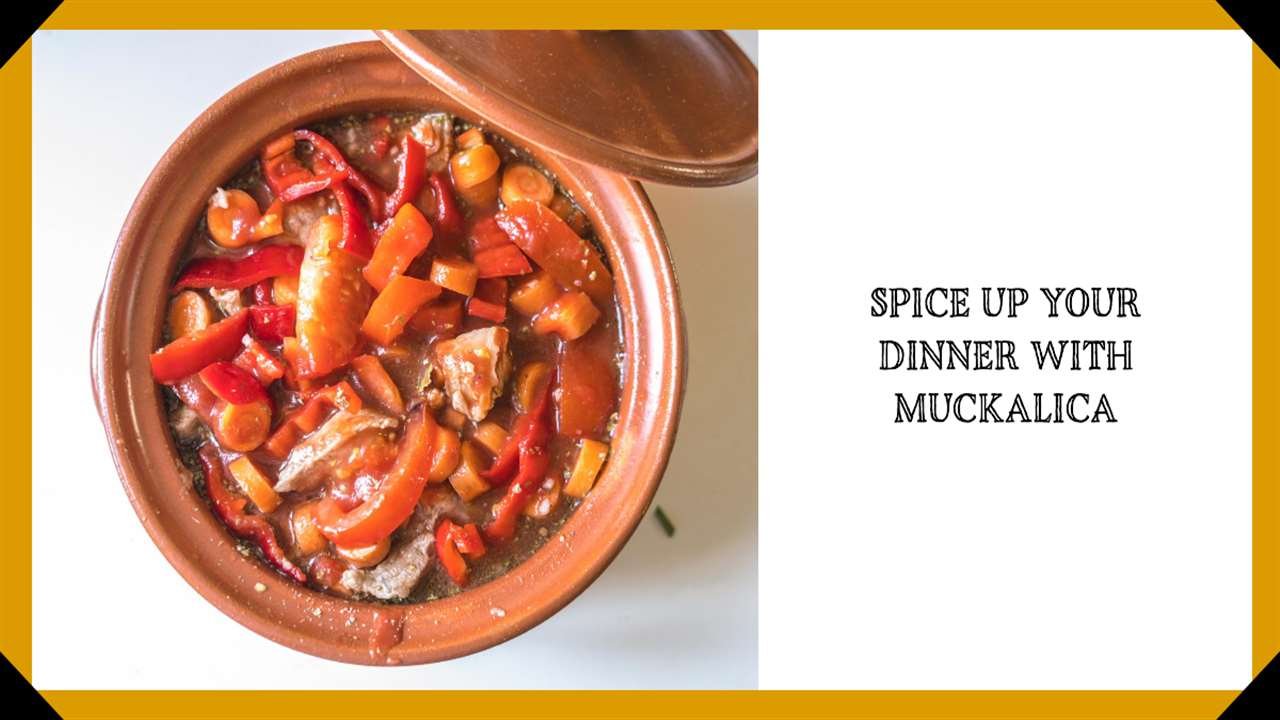Have you ever yearned for a dish that embodies the heart and soul of traditional Balkan cuisine? Look no further than Muckalica, a robust and flavorful stew that captures the essence of Balkan culinary heritage. In this culinary journey, we’ll explore the rich history of Muckalica Recipe, dissect its key components, and guide you through the step-by-step process of creating this savory delight in your own kitchen.
Unraveling the Tapestry of Muckalica Recipe
The Balkan Culinary Tapestry
Balkan cuisine is a mosaic of flavors influenced by a rich history and diverse cultural heritage. Muckalica stands as a testament to this culinary tapestry, with roots deeply embedded in the Balkan region. This hearty stew is a celebration of seasonal vegetables, slow-cooked meats, and a medley of spices that dance on the taste buds.
Muckalica: A Culinary Heritage
Originating from rural kitchens and passed down through generations, Muckalica is more than just a dish; it’s a cultural heritage preserved in simmering pots. The name itself reflects the rustic charm of the Balkan countryside, where simplicity meets indulgence.
Decoding the Elements of Muckalica
1. Meat Medley: The Heart of Muckalica
At the core of Muckalica lies a carefully selected array of meats. While combinations may vary, the marriage of pork, beef, and sometimes lamb or sausages creates a symphony of flavors. The meats are typically browned to perfection, infusing the stew with a deep, savory essence.
2. Vegetable Bounty: A Colorful Ensemble
Muckalica boasts a vibrant array of seasonal vegetables. Bell peppers, tomatoes, onions, and eggplants take center stage, contributing their unique textures and flavors. The vegetables not only enhance the visual appeal but also provide a wholesome balance to the dish.
3. Spice Palette: Balkan Magic
The magic of Muckalica lies in its spice blend. Paprika, garlic, and a touch of chili pepper infuse the stew with a distinctive Balkan flavor profile. The spices are added judiciously, allowing each bite to showcase a harmonious blend of warmth and depth.
4. Slow Simmering: Culinary Alchemy
Muckalica demands patience. The slow simmering process allows the flavors to meld, creating a broth that is both hearty and soul-satisfying. This slow-cooking technique transforms the ingredients into a cohesive masterpiece.
Crafting Muckalica in Your Kitchen
Step-by-Step Guide to Balkan Bliss
Preparing the Meat:
- Meat Selection: Choose a mix of pork, beef, and any desired additional meats. Cube them into bite-sized pieces.
- Browning the Meats: In a large pot, brown the meats over medium heat. This step not only adds depth to the flavor but also creates a savory base for the stew.
Vegetable Medley:
- Chopping Vegetables: Dice bell peppers, tomatoes, onions, and eggplants. The combination of colors adds visual appeal to the dish.
- Sautéing Vegetables: Sauté the vegetables until they soften. The caramelization adds a hint of sweetness to balance the savory notes.
Spicing it Up:
- Paprika Infusion: Introduce the star spice—paprika. Adjust the quantity based on your spice preference, keeping in mind that Balkan cuisine tends to embrace bold flavors.
- Garlic and Chili Magic: Add minced garlic and a touch of chili pepper for that extra kick. Allow the spices to mingle with the meats and vegetables, creating a fragrant aroma.
Slow Simmering Symphony:
- Adding Broth: Pour in a hearty broth or water, covering the meats and vegetables. This liquid will transform into a rich, flavorful base during the slow-cooking process.
- Simmering to Perfection: Reduce the heat to low and let Muckalica simmer for at least an hour. This slow-cooking technique allows the ingredients to meld, resulting in a stew that is tender and bursting with flavor.
Indulging in the Balkan Bounty
As you lift the spoon to your lips and savor the first spoonful of Muckalica, you’re not just tasting a stew—you’re immersing yourself in a culinary journey through Balkan landscapes. The tender meats, the colorful vegetables, and the aromatic spices transport you to the heart of traditional Balkan kitchens.
Conclusion
In conclusion, Muckalica is more than a recipe; it’s a cultural journey encapsulated in a bowl. As you embark on this culinary adventure, relish the simplicity, celebrate the flavors, and appreciate the heritage that each bite brings to your table.
For more ideas, recipes, and cooking tips and tricks, please visit us at Hunan Taste San Jose.
FAQs about Muckalica Recipe
Q1: Can I use different meats in Muckalica?
Absolutely! Muckalica is versatile, and you can customize the meat selection based on your preferences. Pork, beef, lamb, or sausages—all contribute to the rich tapestry of flavors.
Q2: Is Muckalica spicy?
The spice level in Muckalica can be adjusted to suit your taste. The addition of chili pepper provides a hint of heat, but you have the flexibility to control the spice intensity.
Q3: Can I make Muckalica in advance?
Muckalica actually tastes better when made in advance. The flavors continue to develop as it sits, making it an ideal dish for meal prep.
Q4: What is the best side dish for Muckalica?
Muckalica pairs wonderfully with crusty bread, polenta, or even a side of rice. The starch helps soak up the flavorful broth.
Q5: Can I freeze Muckalica?
Yes, Muckalica freezes well. Store it in airtight containers, and it can be kept in the freezer for up to three months. Thaw and reheat gently on the stove for a quick and hearty meal.

